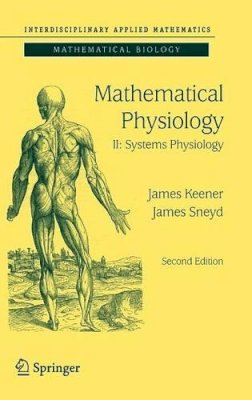
Mathematical Physiology
James Keener
There has been a long history of interaction between mathematics and physiology. This book looks in detail at a wide selection of mathematical models in physiology, showing how physiological problems can be formulated and studied mathematically, and how such models give rise to interesting and challenging mathematical questions. With its coverage of many recent models it gives an overview of the field, while many older models are also discussed, to put the modern work in context.
In this second edition the coverage of basic principles has been expanded to include such topics as stochastic differential equations, Markov models and Gibbs free ... Read more
Owing to this extensive coverage, the seond edition is published in two volumes. This first volume deals with the fundamental principles of cell physiology and the second with the physiology of systems.
The book includes detailed illustrations and numerous excercises with selected solutions. The emphasis throughout is on the applications; because of this interdisciplinary approach, this book will be of interest to students and researchers, not only in mathematics, but also in bioengineering, physics, chemistry, biology, statistics and medicine.
James Keener is a Distinguished Professor of Mathematics at the University of Utah.
James Sneyd is the Professor of Applied Mathematics at the University of Auckland, New Zealand. He is best known for his work on the dynamics of intracellular calcium.
Reviews of the first edition:
...probably the best book ever written on the interdisciplinary field of mathematical physiology. Mathematical Reviews, 2000
In addition to being good reading, excellent pedagogy, and appealing science, the exposition is lucid and clear, and there are many good problem sets to choose from... Highly recommended. Mathematical Biosciences, 1999
Both authors are seasoned experts in the field of mathematical physiology and particularly in the field of excitability, calcium dynamics and spiral waves. It directs students to become not merely skilled technicians in biological research but masters of the science. SIAM, 2004
The first edition was the winner of the prize for The Best Mathematics book of 1998 from the American Association of Publishers.
Show LessProduct Details
Reviews for Mathematical Physiology
